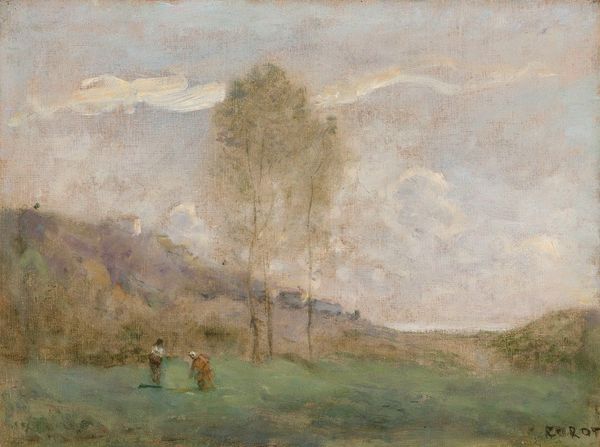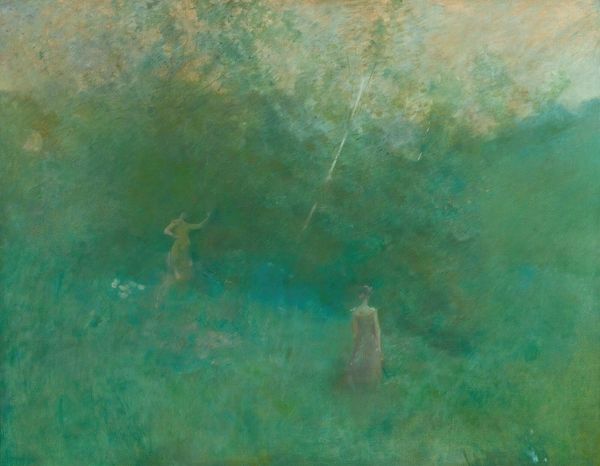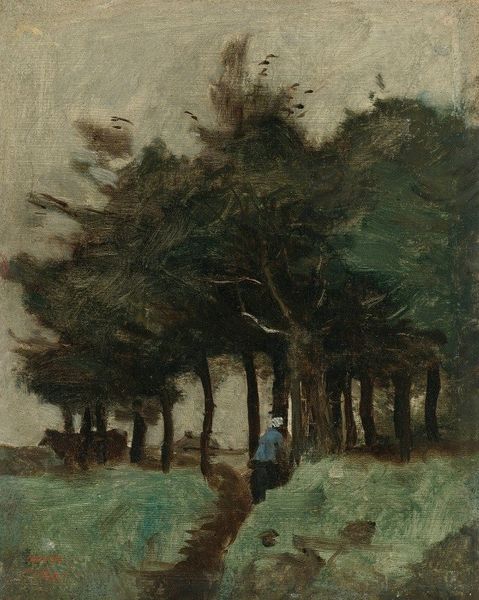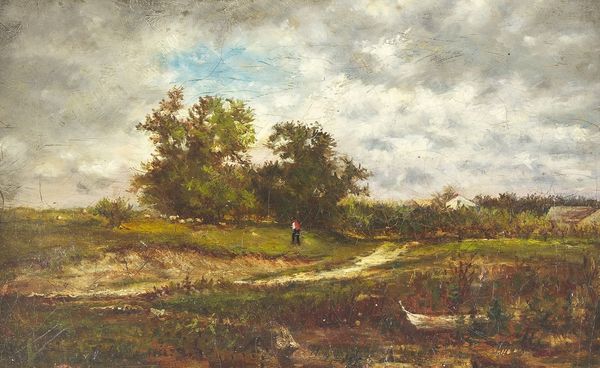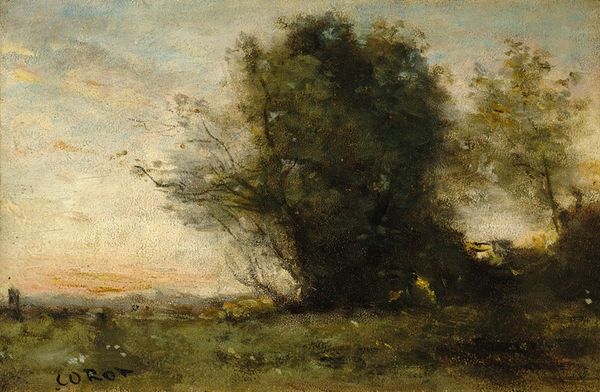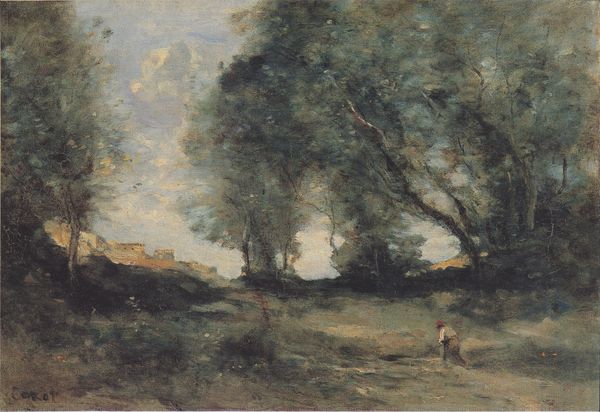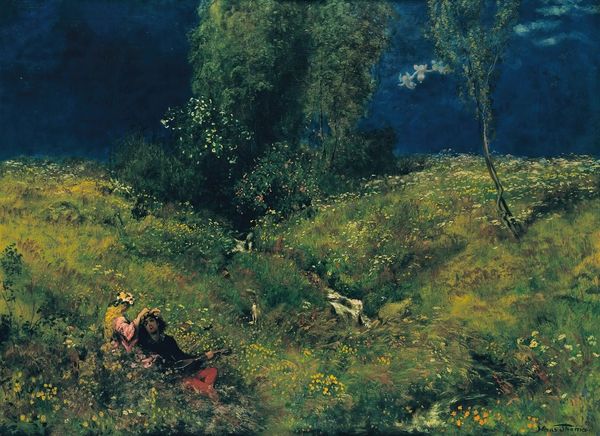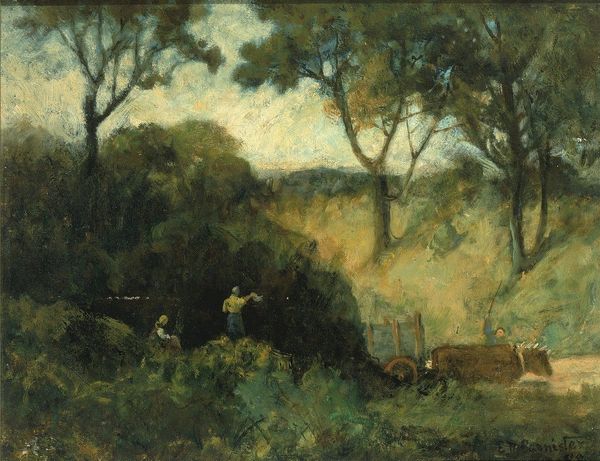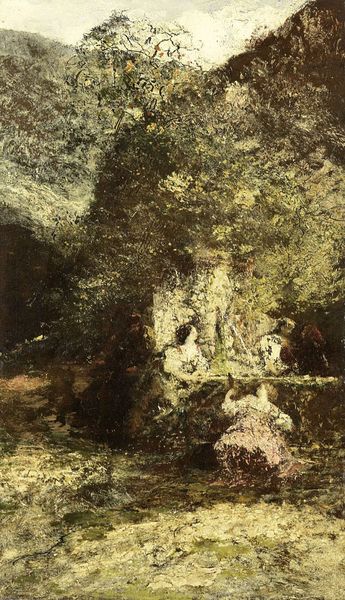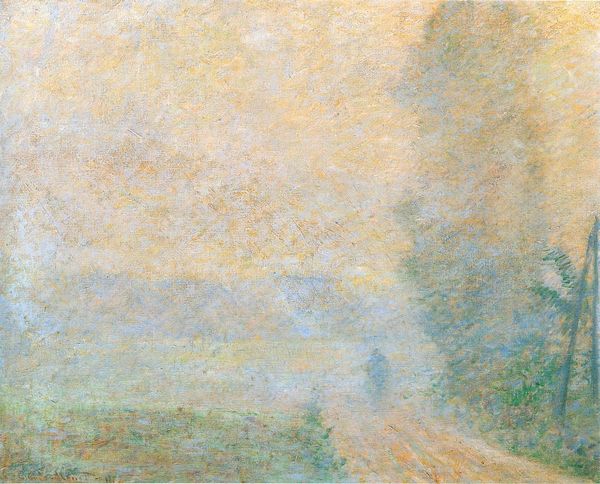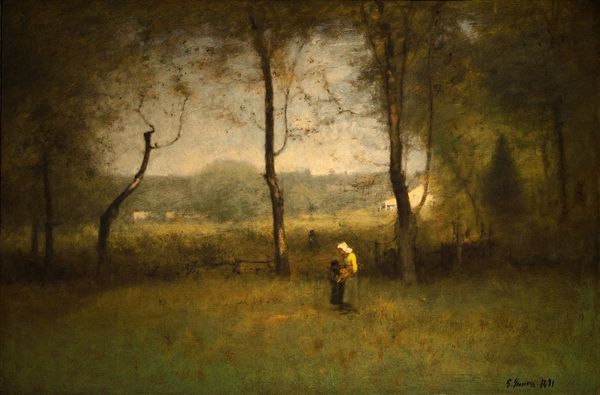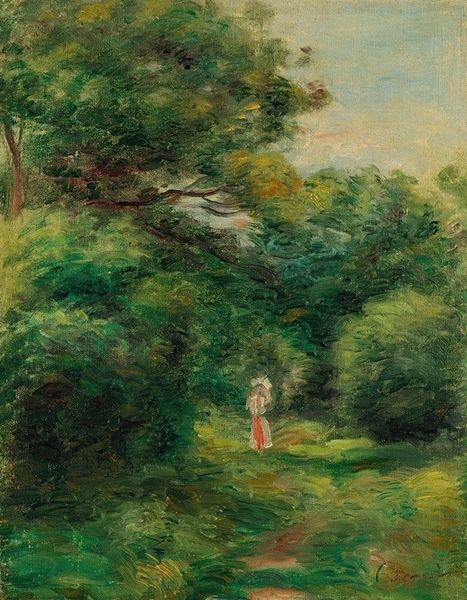
#
figurative
#
abstract painting
#
rough brush stroke
#
charcoal drawing
#
possibly oil pastel
#
acrylic on canvas
#
underpainting
#
painting painterly
#
watercolour bleed
#
watercolour illustration
#
watercolor
Copyright: Public Domain: Artvee
Curator: This is Thomas Wilmer Dewing's "The Hermit Thrush." There's no specific date associated with the piece, adding a layer of mystery to its creation and context. Editor: Wow, my first impression is of quiet solitude. It feels like a dreamscape, or a faded memory. There's something almost unsettling about the way the figures blend into the landscape. Curator: That feeling isn't accidental, I suspect. Dewing's technique relies on incredibly subtle gradations of tone and a limited palette, often employing oil paint to create this hazy, almost ethereal effect. It certainly moves away from the sharper details of earlier academic painting. Editor: Absolutely. It makes me think about the material limitations that were probably a problem back then. Without mass-produced, pre-mixed colors, each hue had to be painstakingly created. It emphasizes labor intensity and production means! How fascinating that someone then might be so preoccupied with the luxury of the moment! I wonder if Dewing mixed the pigment himself or if it was passed to other people within the factory that provided these means? Curator: That's a great observation! His work challenges that clear division between "high art" and the craft involved in materials preparation. The haziness you noted might even reflect that reliance on subtle, carefully mixed colors available at the time! Editor: Right! This blurriness forces us to consider the circumstances in which such tools are readily available. The two women almost seem to dissolve into the grass and sky...It is indeed the case of dissolving the labor through art. It does provoke questions: Were the sitters wealthy elites removed from the labor sector that generated the economy during the Belle Epoque, and is this just a demonstration of ignorance? Curator: Precisely! The figures' detachment might speak to the social divisions prevalent at the time. Also, the brushwork seems very fluid. This allows Dewing to build this hazy atmosphere in many layers. The effect invites us to question the realities of representation. Editor: This piece has completely captivated me. Who knew exploring the production and consumption habits in art could uncover such fascinating dimensions and interpretations of a work? It just seemed an ordinary field and a sky with two figures! Curator: It’s funny; it appeared like an image of solitary peace initially; looking at the sociohistorical layers in labor that constructed Dewing's world adds depth to the visual poetry of the work.
Comments
No comments
Be the first to comment and join the conversation on the ultimate creative platform.
